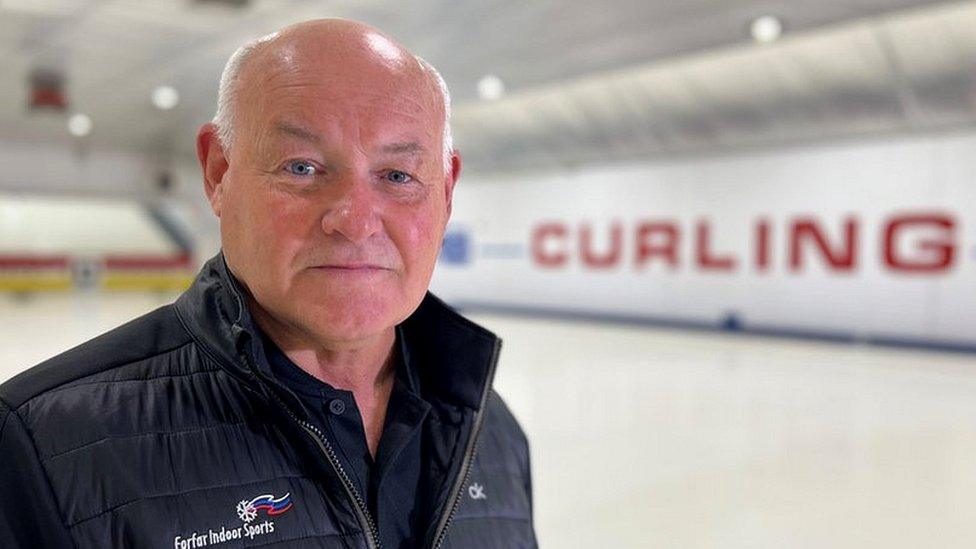The Scottish rink that goes ice-free to survive

Ice hockey player and coach Jamie Brown
- Published
A Scottish ice rink is set to go ice-free for three months for the second year in a row.
The move is part of Inverness Ice Centre's efforts to stay in business.
Like many of Scotland's rinks, Inverness has seen its energy bill rocket.
Last year, the cost of running its refrigeration plant increased from £12,000 to as much as £25,000 a month.
Other Scottish rinks have been experiencing similar difficulties, and there are concerns about the future of the rink in Perth where Olympic curler Eve Muirhead began her career.
Last year, Inverness Ice Centre went ice-free after the end of the curling season in April, through to July to cut costs.
To keep money coming in, the space was used for hosting boxing events, a gig by Scottish singer Callum Beattie and gin and whisky festivals.
Among this year's initiatives will be an unofficial Euros 24 fans zone with food stalls and big screens showing games from Scotland's appearance at the European football championships in Germany.

Ice hockey is one of the winter sports played at Inverness Ice Centre
Ice hockey player and coach Jamie Brown was involved in the centre's decision to go ice-free.
He said the move helped to ensure the centre could keep going and continue to offer competitive and recreational youth and adult skating, curling and ice hockey the rest of the year.
"When it comes down to pounds and pence we just cannot afford to keep the rink open," he said.
"The rising energy costs are an absolute killer - the cost of keeping the ice frozen is absolutely massive.
"Once the curling season is over, the usage by ice sports is a lot less through the week.
"Last year, we melted the ice down to keep that side of things down to zero."
Watch Allison MacLean's report on BBC Naidheachdan
Mr Brown said this did have an impact on activities such as ice hockey, and there was a risk young people might lose interest over the summer closure.
He said Inverness Highlanders Junior Ice Hockey Club was exploring the potential of hiring a hall and playing on roller skates as one way of keeping teams together until the rink was frozen again.
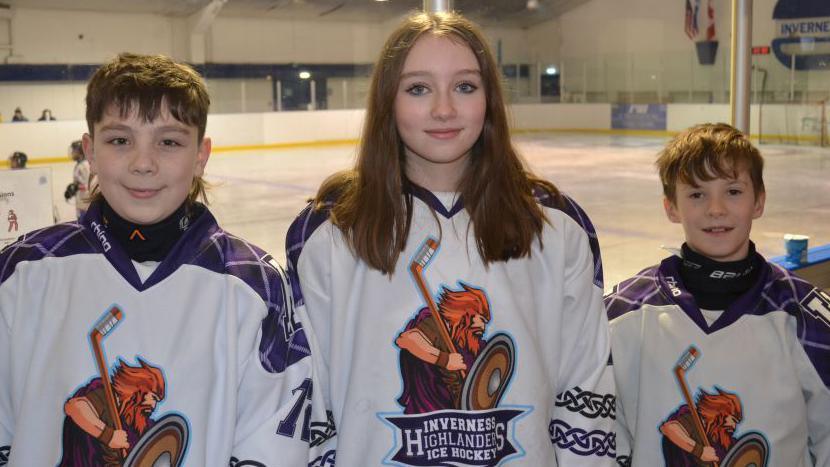
Bode MacDonald, 11, Rebecca Nixon, 13, and Jonah Nelson, 11, are among the young people who use the Inverness rink
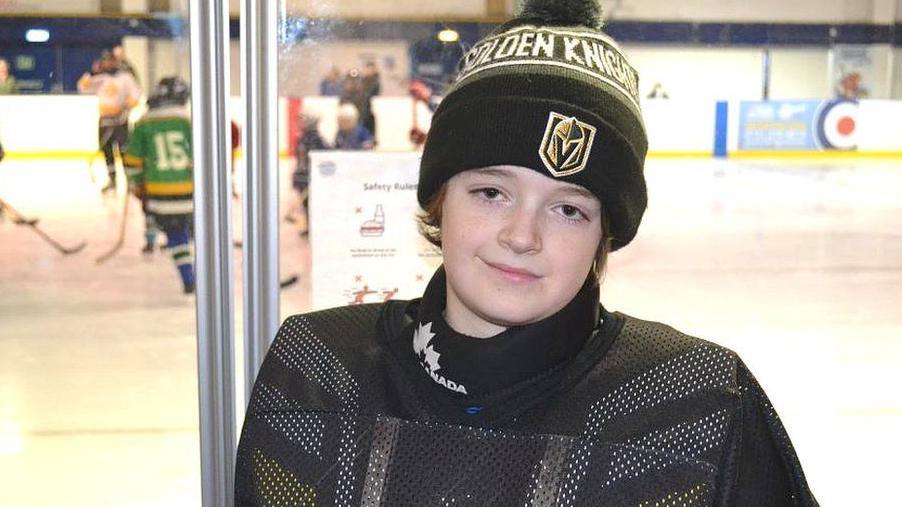
Laurie Dent, 11, enjoys the fast pace of ice hockey
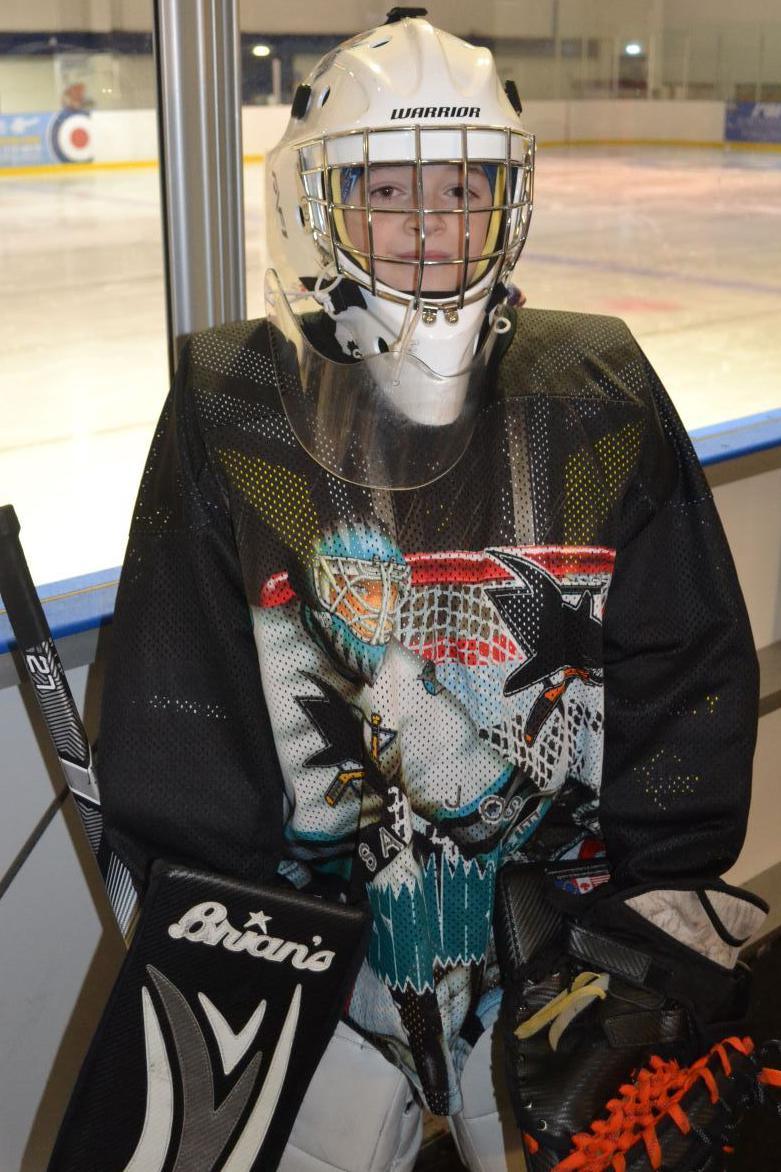
Laurie in his goalkeeper outfit
The club is involved in other ventures to help it, along with other clubs in north and north-east Scotland, to keep going.
One key area it has been tackling is a decline in participation caused by the Covid pandemic's disruptive effect on sport.
At the moment it has 15 new starts in addition to its 24 registered players, but used to have more.
Inverness has teamed up with a junior ice hockey club in Elgin to have enough players to form an under-12s team - Moray Highlanders - to compete in a national league.
The Inverness and Elgin clubs are also working with one in Aviemore so they can offer competitive matches for 12 to 18-year-old players.
They play in a mini tournament called the Northern Cup.
The Inverness' young ice hockey players include 11-year-olds Laurie Dent, Bode MacDonald, Jonah Nelson and Rebecca Nixon, 13.
They said they enjoyed the sport because it was played at speed, and was a sport they could play with their friends.
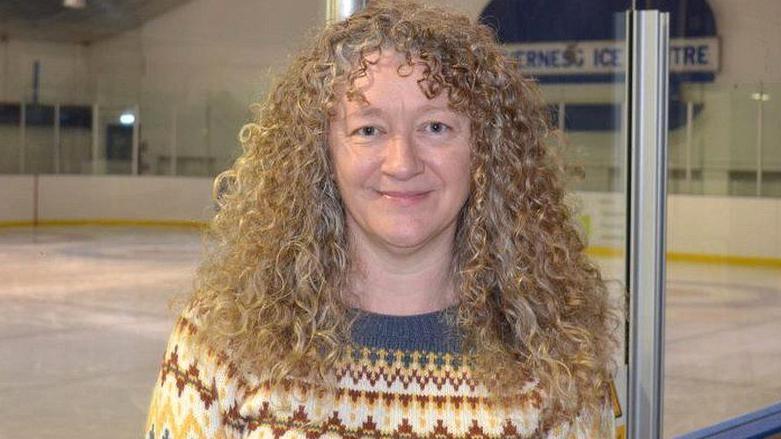
Inverness Highlanders Junior Ice Hockey Club
Katy Kitchingham, chairwoman of Inverness Highlanders Junior Ice Hockey Club, said it was hoped the collaborative work would lead to increased participation.
She said: "It was our club's 30-year anniversary last year, so there's been ice hockey in Inverness for a wee while now and we want to see that continue."
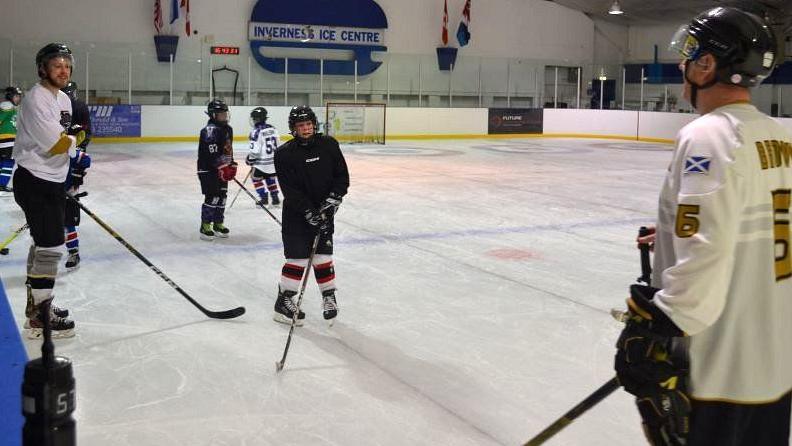
A training session at Inverness Ice Centre
In Aviemore there is a small rink housed in a large marquee.
More than 30 young people, aged from six to 18, take part in its junior sessions.
But Aviemore and Glenmore Community Trust, which runs the rink, hopes to buck the trend of ice rink closures and build a new permanent ice rink in the village.
The last facility was bulldozed in 1999.
Kenny Macdonald, who has played ice hockey for 50 years and coaches juniors in Aviemore, said: "Our main thing we are looking for is a bigger ice surface."
He believes the rink will be a popular addition to Aviemore's attractions, including during the local ski season.
"You cannot rely on the snow now in winter theses days and if you have got a bad day when it is raining and too wet to go cycling, a large ice rink would be ideal and I'm sure you would see the influx seen in the 1980s and 90s," he added.
- Published17 January 2024
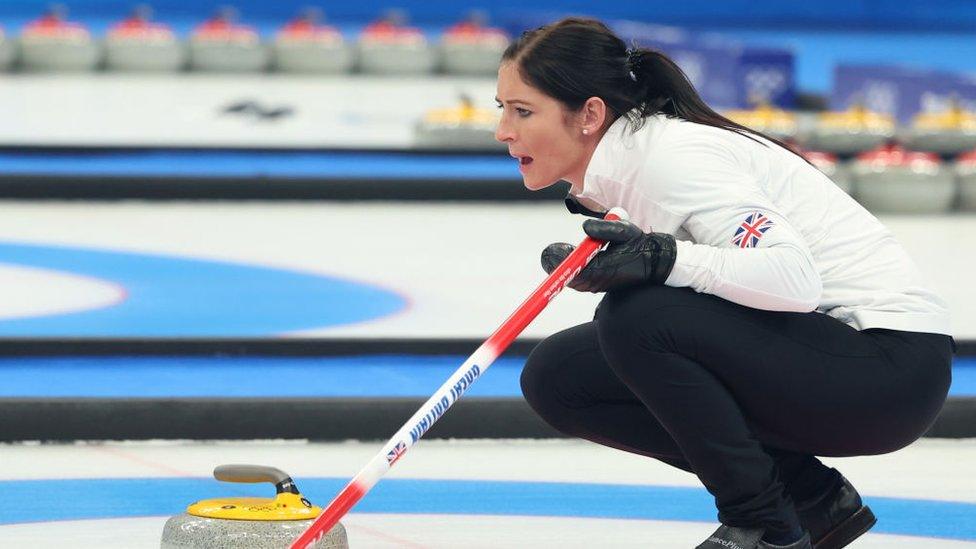
- Published30 January 2023
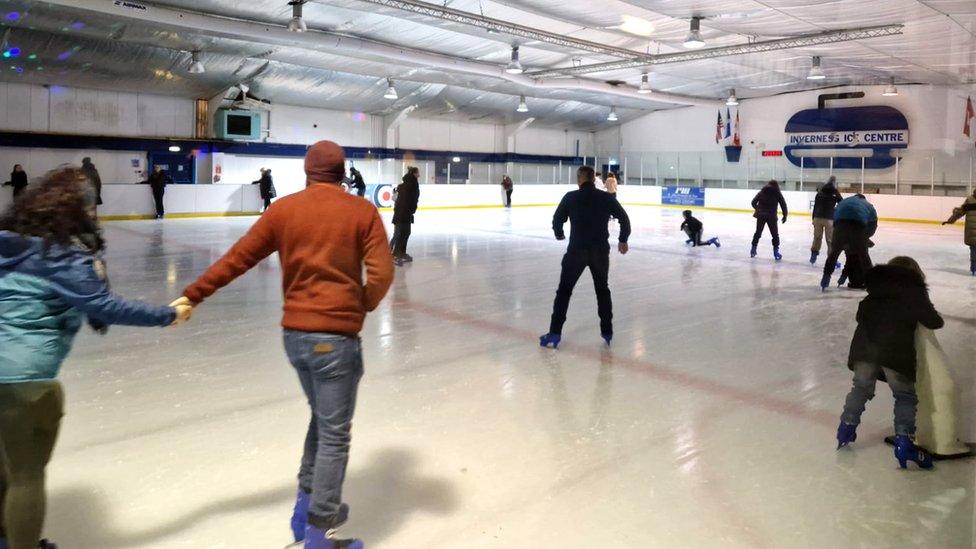
- Published11 December 2022
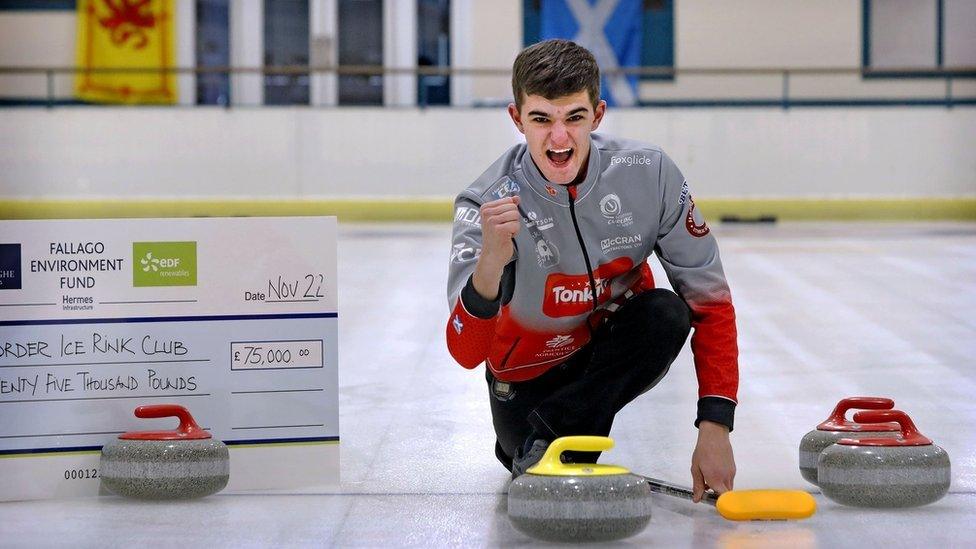
- Published30 June 2023
